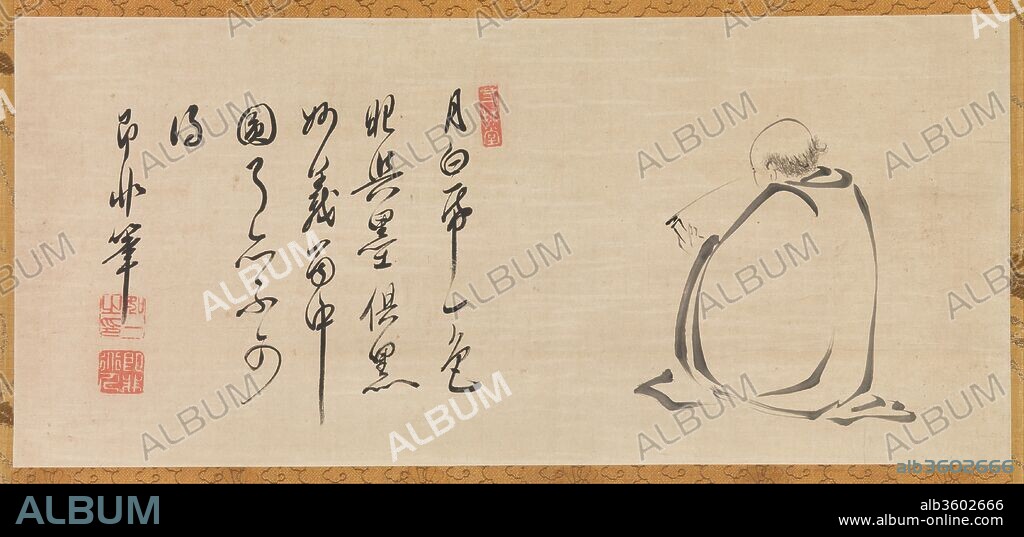alb3602666
SOKUHI NYOITSU (JIFEI RUYI). Reading a Sutra by Moonlight

|
Add to another lightbox |
|
Add to another lightbox |



Buy this image.
Select the use:

Title:
Reading a Sutra by Moonlight
Caption:
Reading a Sutra by Moonlight. Artist: Sokuhi Nyoitsu (Jifei Ruyi) (Chinese/ Japanese, 1616-1671). Culture: Japan. Dimensions: Image: 10 13/16 x 23 7/8 in. (27.5 x 60.6 cm)
Overall with mounting: 44 1/4 × 24 5/8 in. (112.4 × 62.5 cm)
Overall with knobs: 44 1/4 × 26 3/4 in. (112.4 × 68 cm). Date: 17th century.
The Chinese monk Yinyuan Longqi (1592-1673), known in Japan as Ingen Ryoki, came to Japan in 1654, where he introduced a style of Chan, or Zen, Buddhism and spread Ming-dynasty culture. He built a temple called Manpukuji near Kyoto, and his school was known as the Obaku sect after a mountain near the temple site. Sokuhi Nyoichi (Chinese: Jifei Ruyi) was among the group of monks who accompanied Ingen Ryuki. Together, his painting and calligraphy express the profundity found in the quotidian rhythms of Zen monastic life. The poem reads:
Moon and white paper are of
one color.
The pupil of the eye and the ink
are both black.
The marvelous meaning, lodged
in the circle,
Is beyond comprehension.
Technique/material:
Hanging scroll; ink on paper
Period:
Edo period (1615-1868)
Museum:
Metropolitan Museum of Art, New York, USA
Credit:
Album / Metropolitan Museum of Art, NY
Releases:
Model: No - Property: No
Rights questions?
Rights questions?
Image size:
4698 x 2221 px | 29.9 MB
Print size:
39.8 x 18.8 cm | 15.7 x 7.4 in (300 dpi)
 Pinterest
Pinterest Twitter
Twitter Facebook
Facebook Copy link
Copy link Email
Email
